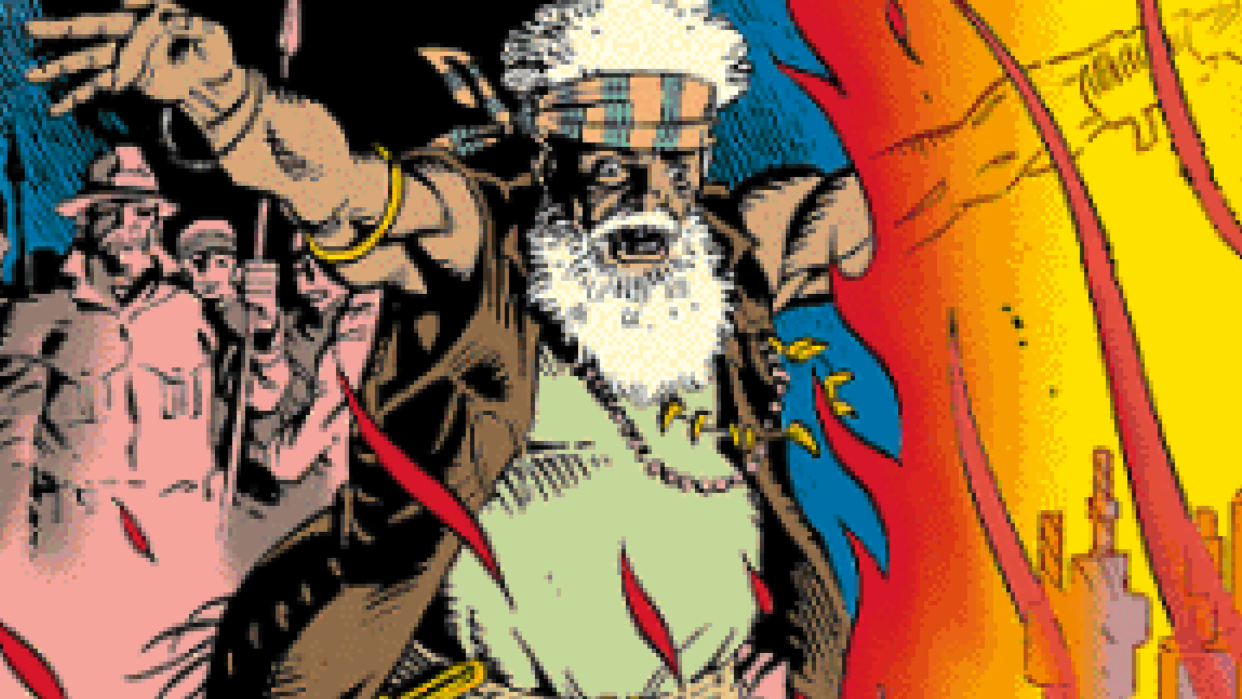Contemptuous pros and drunk Royal Shakespeareans: Horror stories from the early days of videogame voice acting

- Oops!Something went wrong.Please try again later.
The bar is high for videogame voice acting in 2024—it's hard to accept anything less than excellence after the likes of Baldur's Gate 3 and Disco Elysium and so many other games have elevated their scripts with powerful performances. But back in the '90s, that was far more the exception than the rule, a topic PC Gamer recently discussed with veteran game developers during a roundtable interview.
"One of the hurdles, first of all, was the disdain that they had for videogames, like 'I'm a real actor, but whatever this is, it's gonna be silly,'" said Jordan Mechner, creator of Prince of Persia and the adventure game The Last Express.
Even when actors were brought in to work on a game, the circumstances of capturing their performances back then—especially for a rotoscoped production like The Last Express, which blurred the lines between analog and digital—were completely foreign to most of them.
"As storytellers, to try to get them to believe in the reality of this character and this world without having a set built with costumes and all of the paraphernalia that would put them in the mood was a challenge in itself. But it was so magic every time, that moment when the actors' eyes would light up and they would suddenly realize that this was a real character, a real situation, and they would start doing what they were capable of and what they were trained to do."
Khris Brown, who served as a voice editor and director at LucasArts in the '90s and later at Ubisoft, remembered that for most actors "their only understanding of media was really linear."
"Explaining interactivity, explaining the possibility of multiple outcomes and tracking emotional consistency throughout the multiple outcomes was a whole thing. It was a learning process for us as well: How are we going to structure the scripts? How are we going to set up the recording so that the actors can stay in their own emotional moment?"
As Mechner said, "The contempt from actors" was a real challenge for other early adventure games to incorporate voice performances, like Charles Cecil's 1994 point-and-click Beneath a Steel Sky. At that time, Cecil's studio Revolution Software was small, with a team of a dozen or so people making the game. It was just his second game as a project lead.
"My sister's friend's boyfriend was at the Royal Shakespeare Company, and he said 'oh I'll get some mates and they can organize a studio," he remembered. "The studio was actually his mate's front room at Balam High Street. You won't know Balam High Street, but all the buses go past and everything would shake. It was absolute chaos—we didn't actually have a [voice] director, and I didn't really know what I wanted. So they'd go 'how about this?' and put silly voices on. But I remembered them going off for lunch, and him saying 'C'mon lads, let's go off to the pub.' And I said 'really, should you be going to the pub?'
"'Yeah, it'll be fine, it'll be great. We'll loosen up.' They came back after about an hour and a half and must have had about three pints. I said 'thank goodness they're back.' Then, hang on a second: 'Lads, who wants to have a spliff upstairs?' So they came down drunk and stoned. You can imagine the quality.
"I'm very grateful to [publisher] Konami—Konami, in America, got this [recording] and said 'we cannot understand a word of it.' So we actually re-recorded with proper actors and got it right. But that was a baptism of fire."
Mechner luckily fared better on The Last Express, perhaps partially due to its unique production process. Mechner explained that the performance capture on The Last Express and his next game, 2003's Prince of Persia: The Sands of Time "was the opposite of the way that most games do it."
"Instead of doing the cinematics and then bringing in actors to do the voices, we started with just a sound room and had the actors do the dialogue as if it were a radio play, and then created the animation and the cutscenes later to match the edited version of the sound they'd done. The idea being that this would get a more spontaneous and organic performance. But it really gave the actors the possibility to improvise and find the characters in the recording booth, which is actually the way that Disney did it for animated features. Bring in actors, let the actors do what they'll do—sometimes they'll do something crazy, create a new voice or whatever, and then take the best of that. Then the animators have the job of creating the visuals to match."
You can check out the rest of the '90s PC gaming veterans roundtable in the YouTube and Spotify embeds here, or subscribe wherever you get your podcasts.

